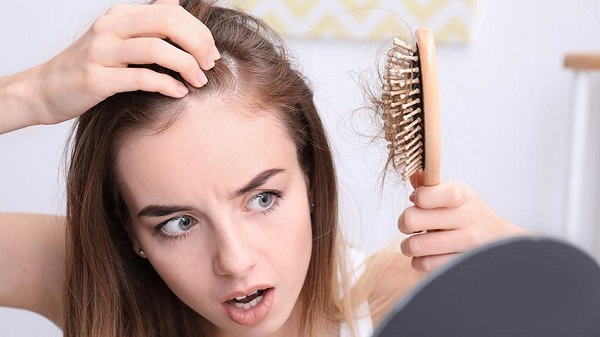For men, a bald crown or inlets on the forehead may not be as pleasant, but no one is aware of it. You see less often women with visibly thinning or completely fallen hair. Yet baldness also occurs in women.
Hairs are made in hair follicles. There are about 100,000 on your head. A head hair grows about two to five years. Then a transitional phase begins, in which the hair stops growing and is looser in the hair follicle. In the rest phase that follows, the hair falls out. After a few months, the hair follicle forms a new hair.
Hair Loss in Women

Fortunately, we do not lose all of our hair at the same time, like other animals that come into the ‘molting’. Your hair is all in different phases: one is still growing, while the other is at rest. Every day about 50-100 hairs fall out. If you wash your hair, it can be as much as 200. Those extra hairs that came loose were already ready to fall out. Only when you lose all the plucking at the same time is there something going on and a visit to the doctor is recommended.
In men there are first inlets at the forehead or a balding crown. In women, hair loss usually follows a different pattern. They become bald on the middle of the head, from the crown to the front. The middle separation is getting wider. If a hair fails, an ever thinner copy replaces it, until the hair no longer grows.
Causes
There are all kinds of causes for hair loss , such as hair and skin diseases, iron deficiency, severe stress, medicine use and weight loss. Hormonal changes also affect your head: hair loss often occurs during the transition or after a birth.
Pregnancy hormones make sure that your hair falls out less, but after delivery it happens as a result of which suddenly a larger amount of hair stays in your comb. Whether the transition actually causes hair loss is not clear, it can also be a coincidence that the hair loss and the transition around the same age occur.
Hair loss can also be in the family. Hereditary alopecia is called androgenetic alopecia. The hair follicles are then hypersensitive to dihydrotestosterone, a hormone that occurs in both men and women in the body. The hormone reduces the circulation of the hair follicles, causing them to shrink and the hair to grow less well.
The way you treat your hair can damage your locks. Permanents, decolorizing, often dyeing and combing when it is still wet makes it brittle, so it can break down in the scalp. It can also fall out due to (unconscious) pulling of the hair, for example if the hair is worn in too tight braids.
Solutions
Hereditary baldness can not be prevented and for women there is unfortunately no miracle pill. There are lotions and shampoos against hair loss with herbal extracts, vitamins and minerals available, but the effect of this has not yet been scientifically proven.
Finasteride is available on prescription for men, but this medicine has not yet been registered for use by women. Moreover, it is dangerous for women of childbearing age, because it caused severe deviations in their offspring in experiments with mice. If the hair does not return, you can opt for a hair or hair transplant .
With the other forms of hair loss there is a big chance that the hair will come back again. If your hair loss is due to a lack of vitamins or certain nutrients, it can help to supplement it with a nutritional supplement. For example, vitamin B8 (biotin) has been scientifically proven to have a beneficial effect on hair growth. Also proteins, iron and vitamin D have a positive influence.
Read More – haircaretips.net
Hi, this is a comment.
To get started with moderating, editing, and deleting comments, please visit the Comments screen in the dashboard.
Commenter avatars come from Gravatar.